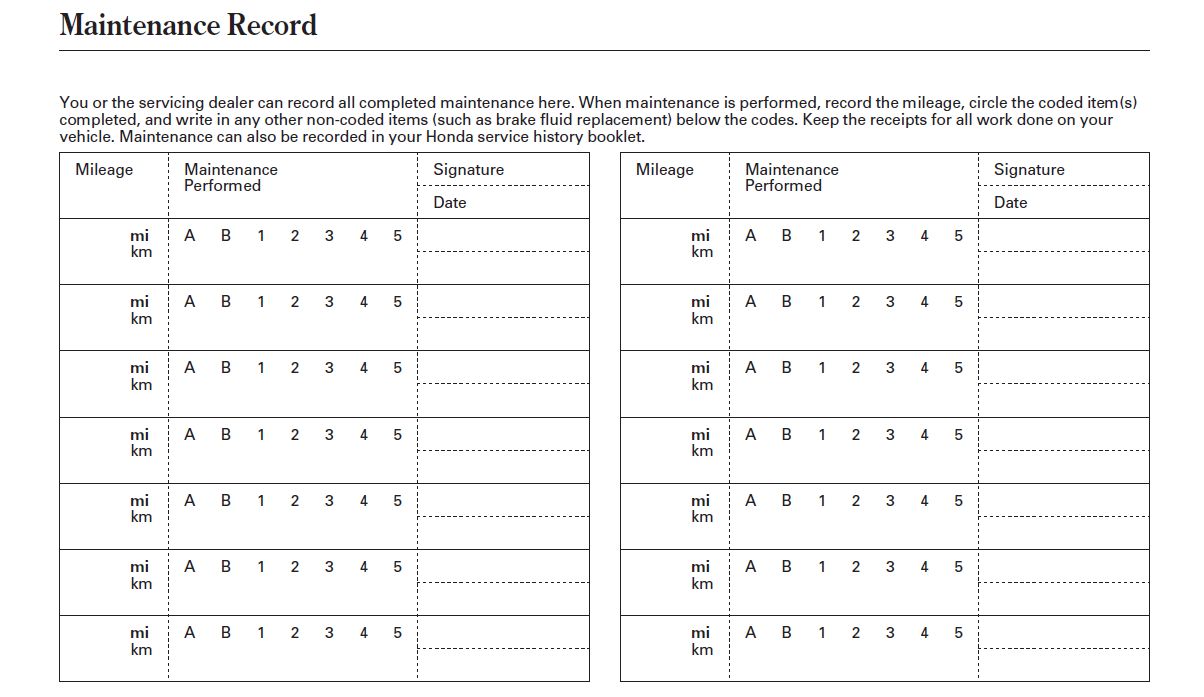When it comes to automobile maintenance, a foundational question arises: at what percentage of oil life should you change your oil in a Honda? While this might seem like a straightforward query, it unveils layers of complexity regarding engine health, longevity, and the fascinating relationship between vehicle owners and their machines.
Understanding oil changes is paramount for any car owner, especially for those who drive Honda vehicles. Honda provides an oil life monitoring system (OLMS) that serves as a guide to optimizing engine performance. This system relies on a series of algorithms that calculate the health of the oil based on driving habits, engine temperature, and other factors. At the core of this inquiry lies the recommendation to consider an oil change when the oil life indicator reaches around 15%. However, this figure is merely a guideline, and it’s crucial to delve deeper into the rationale behind it.
Many vehicle owners might adhere strictly to the advice given by their onboard systems, thinking that a light indicating low oil life is the clear-cut moment to rush to the mechanic. However, it’s essential to grasp why the 15% threshold exists. Oil functions as a lubricant, a cleanser, and a coolant for the engine’s myriad components. Over time, this vital fluid degrades due to contaminants and heat, losing its effectiveness. The OLMS takes into account both mileage and driving conditions, creating a nuanced approach that transcends a one-size-fits-all model.
Fascinatingly, some enthusiasts argue that changing oil at 15% is somewhat conservative. They assert that, under moderate conditions, full synthetic oils can sustain performance even when the oil life indicator dips below that mark. In essence, the phenomenon of premature oil changes is deeply interwoven with lifestyle choices and driving habits. For instance, if you engage in city driving, where stop-and-go traffic abounds, your engine generates more heat, thus demanding more frequent oil changes compared to highway driving, where the engine operates at a more stable temperature.
Moreover, understanding the percentages and recommendations can empower you as a consumer. If you’re frequently operating at high RPMs or towing heavy loads, you might want to consider changing your oil sooner. Conversely, if you’re a casual driver who primarily uses your Honda for short trips, you could stretch the oil change interval, provided there are no warning lights or performance issues.
But why is this conversation about oil life so enthralling for car enthusiasts? There’s a compulsive blend of science and art in maintaining a vehicle that drives many to meticulous attention. The modern driver has access to a wealth of information regarding oil types, viscosity ratings, and maintenance practices which shapes a community devoted to optimization and preservation. Enthusiasts often partake in spirited discussions, weighing the benefits of conventional versus synthetic oils or debating the merits of changing oil based purely on time rather than mileage.
The olfactory cues that accompany an oil change—from the scent of fresh motor oil to the unmistakable perfume of a well-lubricated engine—also tie the driver to the vehicle in a profound manner. It is during these moments of hands-on maintenance that owners cultivate a deeper appreciation for their machines, almost treating each oil change as a ritual of renewal. Within these acts, they unlock not just the secret to automotive longevity, but a sense of personal fulfillment and ownership.
Furthermore, the education around oil life indicators encourages a broader understanding of automotive mechanics. It implicitly raises questions about how components interplay within an engine, how longevity can tie back to proper maintenance, and ultimately, how drivers can empower themselves through knowledge. The use of an oil life monitoring system embodies an intersection of technology and human ingenuity—a reminder that even in an age of automation, the knowledgeable driver remains an essential part of vehicle maintenance.
This knowledge yields tangible benefits. By adhering to maintenance schedules and engaging with their vehicles, owners can sidestep costly repairs down the line. For instance, understanding the optimal points to change oil not only prolongs engine life but also enhances fuel efficiency. A well-maintained engine runs more smoothly, and when components operate harmoniously, vehicles consume less fuel, translating to savings at the pump.
Additionally, engaging with oil and maintenance fosters a behavioral shift toward being proactive rather than reactive about vehicle health. Vehicle owners who regularly check their oil levels and understand the significance of oil quality often feel a greater sense of control over their vehicle. This proactive approach minimizes the risks of unexpected breakdowns and fosters a deeper connection between the driver and their machine. It turns car ownership from a simple transactional relationship into an invested partnership.
In summary, the question of at what percentage to change oil in a Honda encapsulates not just mechanical understanding, but also an exploration of the deeper emotional connection to automotive maintenance. The recommendations provided by Honda’s OLMS may suggest a 15% mark to initiate oil changes, but the complexities of driving habits and personal insights add layers to this narrative. The oil change ritual emerges as both a practical necessity and an intimate connection between the vehicle and its owner—a dance of mechanics and philosophy, of science and art.
